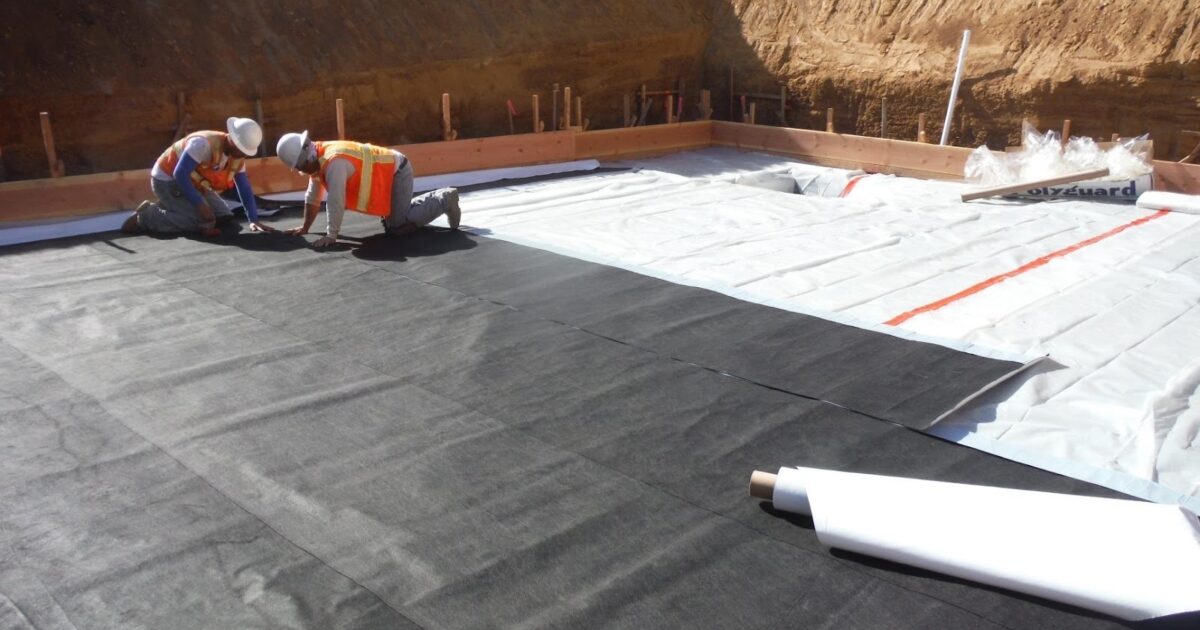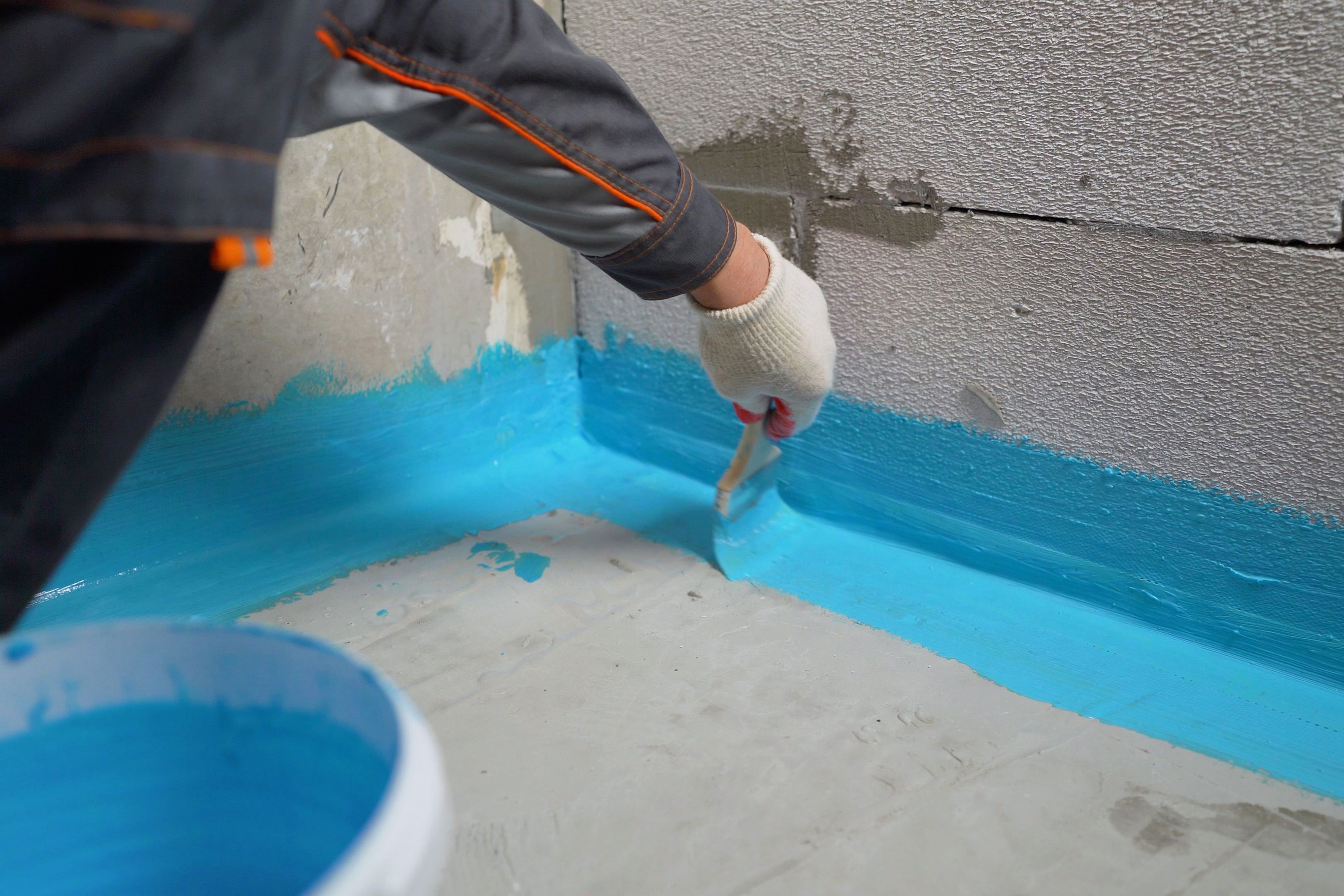The Role of Sump pump discharge drainage Omaha in Preventing Floods
How Waterproofing Functions: A Detailed Consider Techniques and Technologies
Waterproofing is vital for securing frameworks from moisture-related damage. It entails various methods and modern technologies that produce obstacles versus water intrusion. Traditional methods, such as compressed clay, exist together with modern-day technologies like liquid-applied membrane layers. Understanding the subtleties of these strategies is essential for effective application. Nonetheless, the efficiency of any type of waterproofing remedy pivots not just on the techniques utilized however also on recurring maintenance and inspection. What are the key aspects that influence lasting efficiency?
Understanding the Essentials of Waterproofing
Waterproofing is a vital process that protects structures from water breach, which can result in substantial damages in time. This approach entails the application of various products and techniques developed to create an obstacle versus moisture. The main goal is to avoid water from permeating surfaces, which can create deterioration, mold growth, and structural instability.Various aspects affect the selection of waterproofing method, including the kind of framework, its area, and environmental problems. Recognizing the physics of water activity and the residential properties of different products is crucial in choosing an efficient waterproofing solution.Effective waterproofing not only safeguards structures however also boosts their durability and stability. Normally, it is incorporated into the layout phase of building to ensure detailed defense. As understanding of water-related issues grows, the value of comprehending waterproofing basics comes to be increasingly clear to engineers, building contractors, and residential or commercial property proprietors alike.
Traditional Waterproofing Approaches
Traditional waterproofing techniques have been utilized for centuries, depending on tried and true techniques and products to protect structures from water damages. Among the earliest methods entails making use of clay, which, when compacted, develops an all-natural barrier versus moisture. Furthermore, asphalt, a sticky, black material stemmed from oil, has actually been used for its water-resistant residential properties, commonly applied to roofs and foundations.Another method involves the application of lime-based plasters, which supply a breathable layer that permits dampness to escape while stopping water ingress. Thatch roof covering, a traditional approach still seen in some societies, offers outstanding waterproofing due to its tightly packed straw layers.Moreover, the usage of rock and block has actually projected, as these materials are naturally immune to water when correctly set up. In general, standard waterproofing methods emphasize the value of choosing ideal products and construction techniques to boost resilience versus water invasion.
Modern Waterproofing Technologies
Developments in modern waterproofing modern technologies have actually transformed the method structures are safeguarded from water damages. Innovative approaches such as liquid-applied membranes and sophisticated sealants have improved the efficiency and versatility of waterproofing options. These innovations permit seamless application, decreasing the risk of leakages and ensuring complete insurance coverage over complicated surfaces.Moreover, the assimilation of clever technologies, such as moisture sensing units and automated tracking systems, makes it possible for real-time analysis of waterproofing performance. This proactive strategy assists in prompt upkeep and minimizes long-term fixing costs.Additionally, advancements in spray-applied coverings provide quick application and outstanding adhesion, adapting to numerous substratums while offering durable defense. Strategies like polymer-modified systems even more boost adaptability and sturdiness, making them suitable for diverse environments. Overall, contemporary waterproofing innovations not just reduce water intrusion however additionally add to the durability and sustainability of frameworks, marking a substantial shift in the sector.
Products Utilized in Waterproofing
The effectiveness of waterproofing remedies heavily relies on the materials used in their application. Numerous materials are employed to develop barriers versus water ingress, each with unique properties suited for various settings. Frequently utilized materials include membranes, coatings, and sealants.Liquid-applied membranes, typically made from polyurethane or acrylic, develop a smooth obstacle that adjusts to complex surfaces. Sheet membranes, commonly constructed from rubber or polycarbonate, deal resilience and are excellent for larger areas. In addition, cementitious waterproofing products, composed of cementitious compounds, give exceptional adhesion and flexibility.Sealants made from silicone or polyurethane are crucial for dig this joints and seams, guaranteeing thorough defense. Innovative materials, such as geo-composite membranes, combine several features, boosting efficiency. Overall, the choice of waterproofing products is crucial in achieving resilient and effective water resistance, customized to specific task requirements and ecological problems.
Usual Applications of Waterproofing
Waterproofing plays a vital duty in various markets, making sure the durability and honesty of structures. Common applications consist of residential remedies that secure homes, commercial framework that safeguards services, and commercial settings that call for robust security versus dampness. Recognizing these applications highlights the importance of waterproofing in maintaining both safety and capability across different atmospheres.
Residential Waterproofing Solutions
Several home owners face challenges with dampness invasion, making reliable property waterproofing services important. Numerous techniques exist to resolve this issue, consisting of inside and exterior waterproofing systems. Inside options often include the application of sealers and finishes to basement walls, which assist protect against water seepage. Exterior methods generally consist of the installation of drainage systems and waterproof membrane layers that divert water far from the foundation.Additionally, home owners may take into consideration sump pumps to remove water accumulation and dehumidifiers to control humidity degrees. Correct grading and the usage of gutters additionally play a vital role in taking care of water flow around the home. By applying these approaches, homeowners can substantially reduce the threat of water damage and mold and mildew growth, making certain a dry and safe living environment.

Commercial Framework Defense
Reliable waterproofing options play a critical duty in the protection of business facilities. French drain installation Omaha. These strategies are crucial for securing buildings, auto parking frameworks, and bridges from water damages, which can compromise architectural honesty and result in expensive repairs. Usual applications consist of the installment of membranes, coverings, and sealants that produce barriers against wetness seepage. Locations such as cellars, roofings, and outside wall surfaces are usually prioritized to ensure longevity and durability. In addition, waterproofing systems can improve energy performance by stopping water-related concerns that might result in mold development and deterioration. By executing durable waterproofing measures, homeowner can safeguard their investments and maintain operational efficiency, inevitably adding to the general sustainability of business centers
Industrial Applications Overview
While different markets deal with distinct difficulties, the need for reputable waterproofing solutions continues to be a constant in commercial applications. Industries such as manufacturing, construction, and power typically experience atmospheres where moisture exposure can threaten structural integrity and functional effectiveness. In making facilities, waterproofing is important for shielding equipment and products from water damage. In construction, it safeguards structures and basements against groundwater infiltration. The power field counts on waterproofing for the protection of equipment in hydroelectric plants and offshore structures. In addition, food processing markets make use of waterproofing to ensure health and conformity with safety requirements. In general, effective waterproofing options are necessary for boosting toughness, safety and security, and performance across numerous commercial settings.
Upkeep and Longevity of Waterproofing Solutions
Waterproofing options are created to supply lasting defense against dampness invasion, normal upkeep is crucial to assure their efficiency and long life. Regular evaluations play a significant function in recognizing prospective concerns such as fractures, peeling, or indications of water damages. Addressing these troubles without delay can avoid more wear and tear and expensive repairs.Additionally, cleansing Extra resources the surface of waterproof areas aids eliminate dust and debris that can compromise the integrity of the waterproofing obstacle. It's additionally recommended to reapply safety finishes or sealers as suggested by suppliers to keep suitable performance. Environmental variables, such as UV direct exposure and severe weather, can impact the lifespan of waterproofing materials, making normal evaluation important
Frequently Asked Concerns
Can Waterproofing Be Applied in Winter?
The concern of using waterproofing in chilly weather condition raises worries about bond and curing. Many products may not execute at their finest in reduced temperature levels, necessitating mindful option and factor to consider of specific guidelines for effective application.
How Lengthy Does Waterproofing Typically Last?
The duration of waterproofing efficiency varies based on products and ecological variables. Normally, it can last from five to 10 years, however routine maintenance and examinations are important to guarantee peak efficiency and durability.
Is Do It Yourself Waterproofing Effective and Safe?
The performance and safety of do it yourself waterproofing depend upon different variables, consisting of material high quality and application click over here technique. While some individuals accomplish acceptable outcomes, others may experience issues that compromise lasting protection and architectural integrity.
What Are the Indicators of Failing Waterproofing?
Indications of failing waterproofing consist of visible water spots, peeling off paint, mold and mildew development, musty odors, and wetness in walls or ceilings - Water Solutions Omaha. These indicators suggest jeopardized barriers, necessitating punctual examination and possible remediation to stop additional damages
Exactly how Do I Pick the Right Waterproofing Professional?
